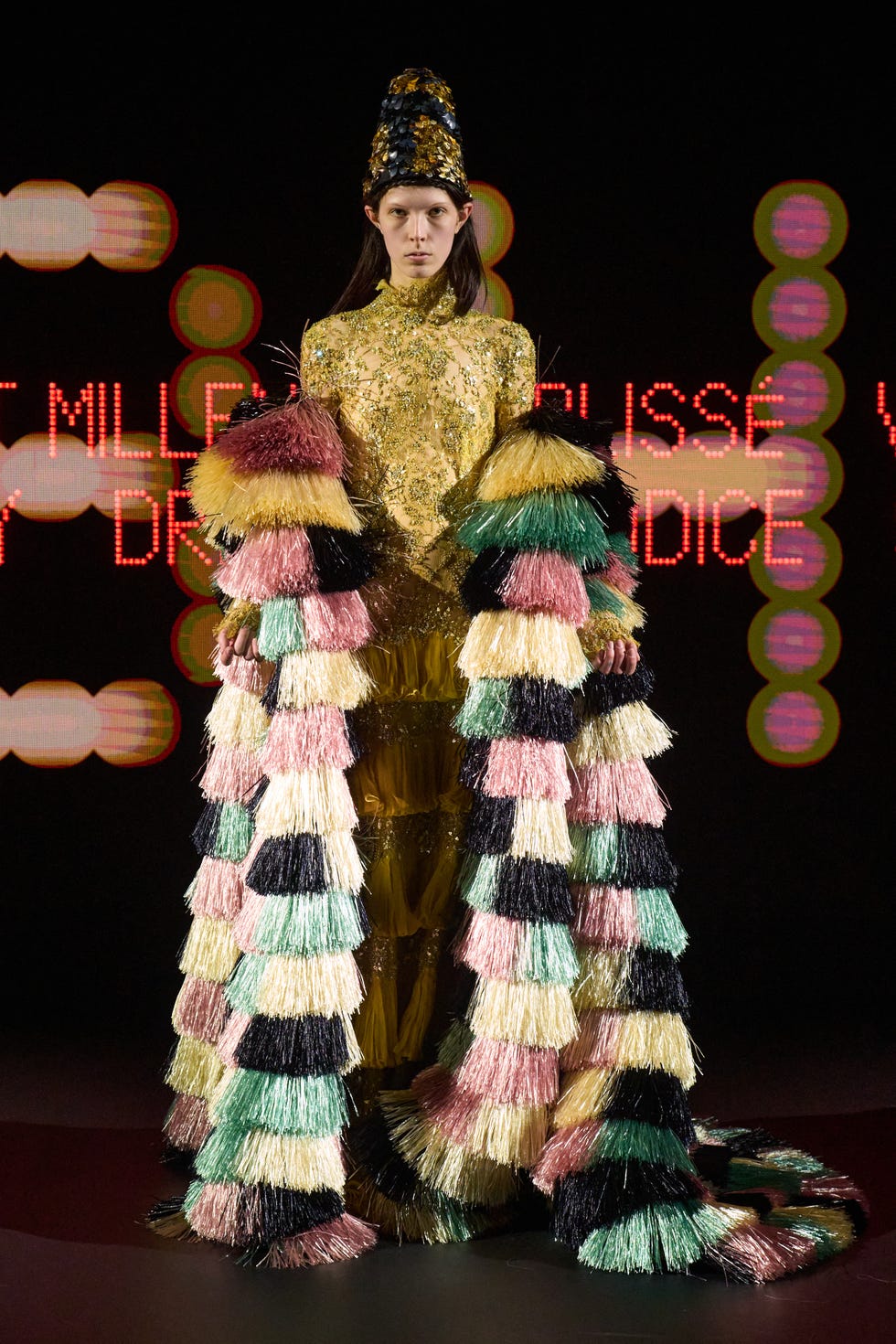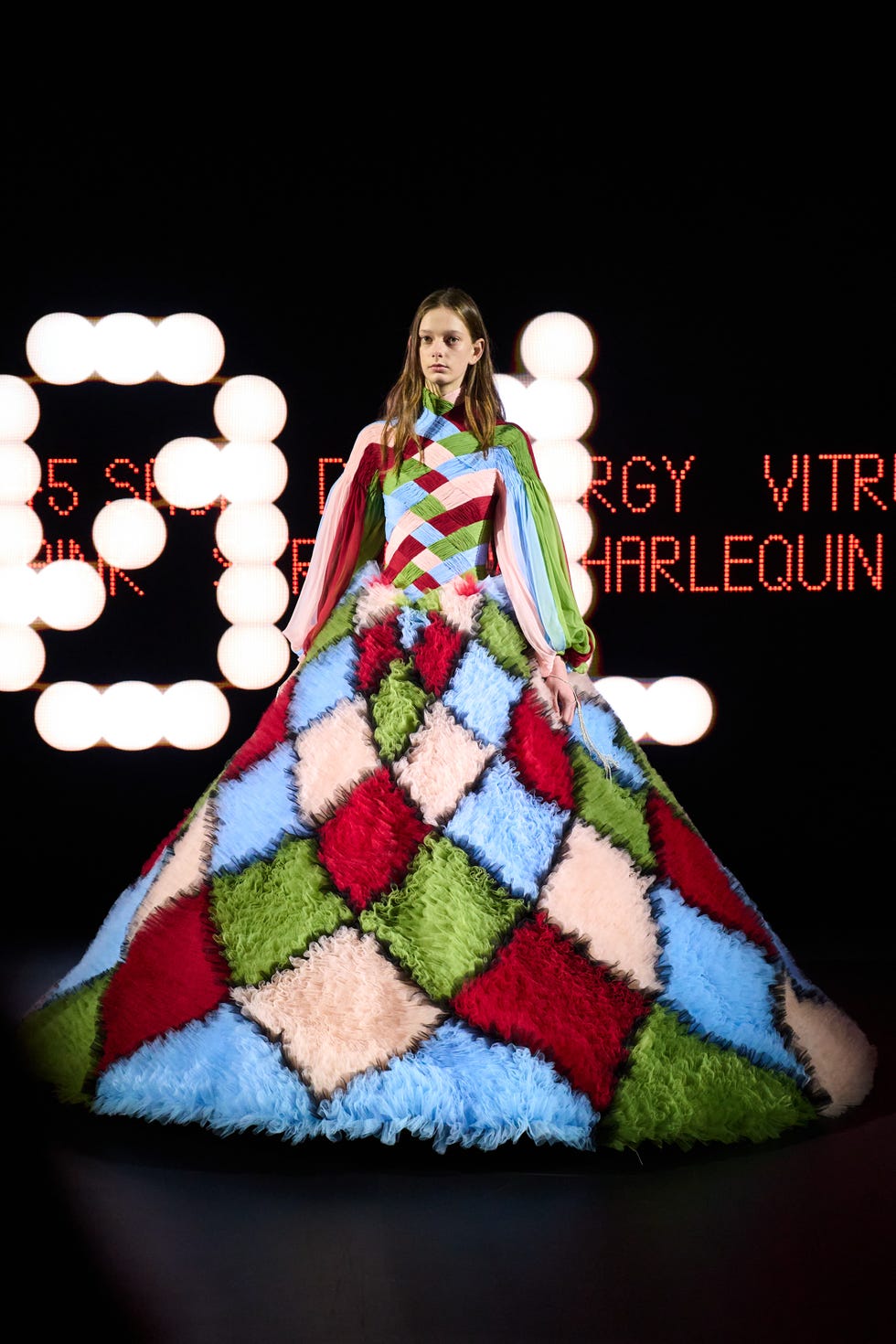Few individuals in fashion today possess a mind as unique as Alessandro Michele’s. He has an almost otherworldly talent for conjuring prismatic universes through the cut, design, and presentation of garments. Every piece is never just one thing; it’s many things at once, whether in the context of the clothes, people, places, or time. That’s why his creations, especially in his recent role as creative director at Valentino, have such a captivating, almost magical quality.
This week, especially in America, we needed Michele’s magic more than ever. Watching his debut couture collection walk the Paris runway this morning provided a much-needed distraction from the chaos of our political landscape—a brief escape into a world of mysterious, captivating beauty.

Titled “Vertigineux,” which translates to "dizzy" in French, the collection drew inspiration from the work of Italian semiologist Umberto Eco, particularly his analysis of lists. Eco explores the infinite potential of lists to create culture and order—or sometimes, disorder. Michele’s collection notes reflect this idea, describing the list as a “journey into the vertigo of an unfinished multiplicity.” He explains that Eco’s writings inspired him to think of each dress as part of an uninterrupted and infinitely expanding catalog of words.

Essentially, each piece in the collection was designed to lead our minds on a glamorous detour. Michele drew from a wide range of influences: Valentino’s archives, literature, fantasy, and forgotten histories of art. His non-linear approach to design allowed for infinite possibilities, evident in the collection’s diverse and innovative output.
The runway presentation was set in a stadium-style layout, with models walking one by one to a green “X” marked on the floor, pausing for a moment in stillness as the audience gazed upon them. A red ticker behind them flashed a series of unrelated words, such as “juxtaposition,” “vision,” “references,” or “constellation,” which connected each look to a number. This same number appeared on the screen as the models stood on their mark, aligning with the extensive collection notes—nearly 200 pages—where words streamed in two straight lines, reminiscent of stock indexes.

Some of Michele’s most mesmerizing pieces included gowns adorned with woven fabric strips forming triangular shapes, crinoline skirts with a vintage flair, a floral dress crafted entirely from needlepoint tapestry, and another made entirely of crochet. Victorian collars were paired with skirt suits, while cascading ruffles contrasted with intricately embellished masks—some resembling those worn by Lucha Libre wrestlers, others delicate veils for a gothic princess bride. Valentino’s iconic ruffles, bold red hues, accordion pleating, and polka dots made appearances, but always in a fresh, modern way.

The models, varying in age, were Alessandro’s otherworldly creatures, each one looking as though they could take flight at any moment to a distant planet with no dress code. Notably, 80 percent of the show’s pieces were custom-designed to fit the bodies of the models, proving that while Michele seems to transcend reality, he is deeply connected to the human side of fashion. The craftsmanship was visible in every detail—like how the front panels of a jacket aligned perfectly when buttoned or how the multicolored fringe of an embroidered cape stacked together playfully. The exceptional beadwork and the simplicity of pieces like a sleek black column dress with voluminous blue panniers or a pleated red cape with a Valentino-red bow at the neck showcased the breadth of Michele’s talent.

At the show’s close, models marched out in a group, battling a gust of wind as strobe lights flickered and static buzzed on the screen. It felt as though they were running toward an imaginary spaceship, ready to escape to a realm beyond. Watching Michele’s debut couture collection felt like an endless adventure—one where imagination, creation, and dressing have no boundaries.
